Published:
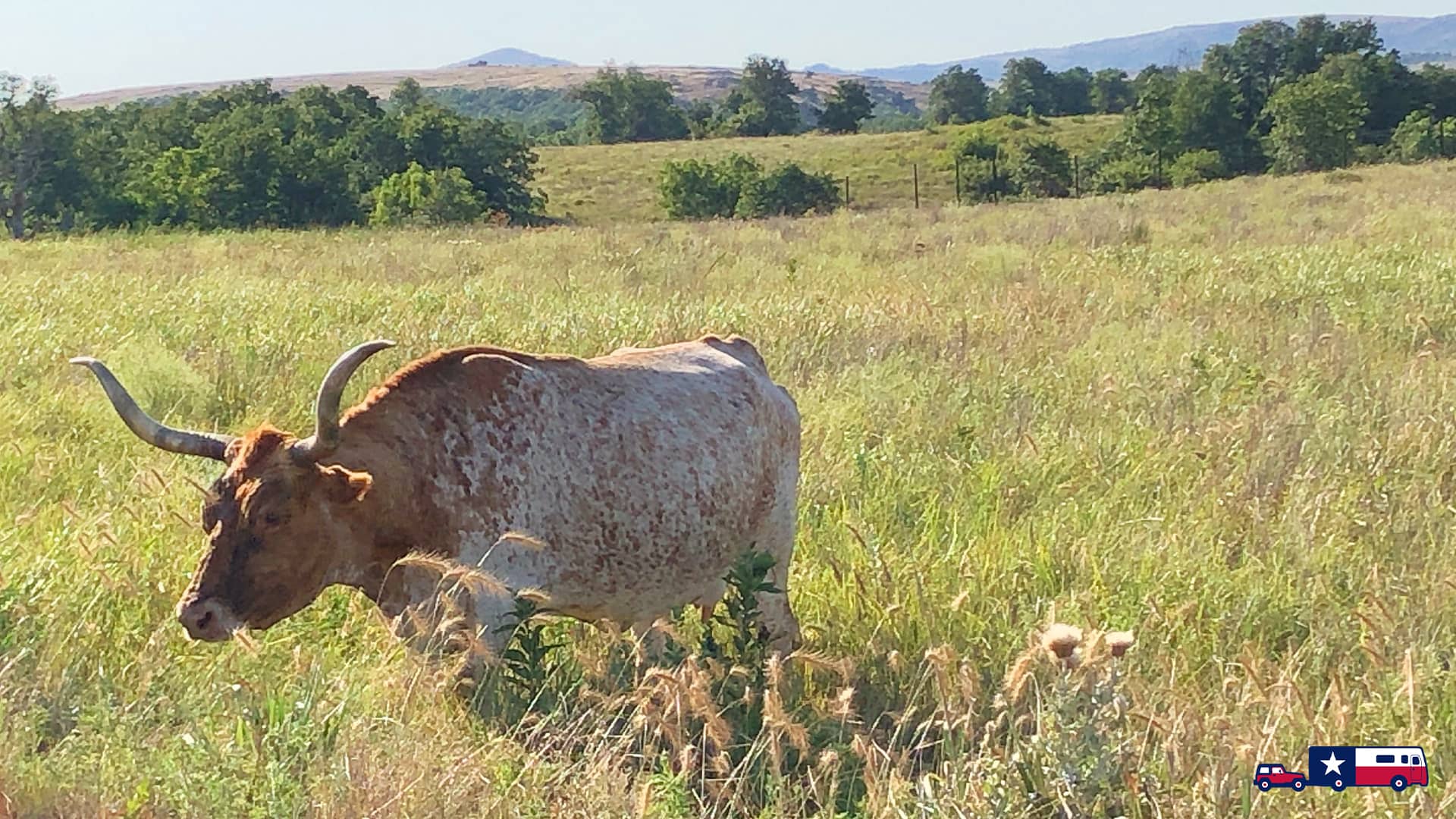
Nestled in Southwestern Oklahoma, just outside of Lawton and near Medicine Park, you'll find a hidden gem full of surprises: the first Big Game Wildlife Refuge in the United States... Wichita Mountains National Wildlife Refuge!
During a trek around North Texas back in 2019, it seemed like everyone we met was talking about a beautiful place just north of the state line in Oklahoma... a place with history, interesting landscapes and a variety of wildlife... a place that, to that point in our travels, we had never heard of. We soon found ourselves changing our travel plans to add a visit to Wichita Mountains Wildlife Refuge. And guess what: Admission into the wildlife refuge, grounds, picnic areas, hiking trails and visitor center are FREE!!
Before we share a history of the park, let's first look at its namesake. The Wichita Mountains stretch for approximately 30 miles and are said to have risen from the surface of the earth between 290 and 330 million years ago. The highest peak in the Wichitas is Mount Scott. The top of Mt Scott is said to sit at an elevation of 2,464 feet above sea level. The mountains were named for the Wichita people, a tribe of Native Americans who lived in this area. Wichita Falls, Texas and Wichita, Kansas are also said to be named for them.
Though the Wichita Mountains range over several counties in Oklahoma, the wildlife refuge sits in Comanche County, named for the Comanches who lived in the area, including Quanah Parker, who we've learned about through Texas history.
In 1901, President William McKinley began protecting this area by naming a section of the mountain range the Wichita Forest Reserve. The land became a wildlife refuge in 1905. In response to declining numbers of the American Bison and the open range that they needed to survive, President Theodore Roosevelt took the conservation efforts further by naming the preserve the Wichita Forest and Game Preserve and making it the first big game wildlife refuge in the country. He added additional acreage to the preserve in 1906.
The refuge's first bison came from a surprising place: New York! In 1907, Comanche Chief Quanah Parker was amongst the people who welcomed 15 American Bison to their new range after a long journey from the New York Zoological Park. (That park would go on to become The Bronx Zoo.) Through the years, the preserve would become home to Rocky Mountain Elk and Texas Longhorn Cattle. You'll also find Wild Turkeys, White-Tailed Deer, and the Black-Tailed Prairie Dog within the preserve.
In 1936 the preserve's name was changed to the Wichita Mountains National Wildlife Refuge. Formerly operated by the US Forest Service, the refuge is now operated by the US Fish and Wildlife Service.
Today, the refuge features paved roads, the Doris Campground, a fantastic Visitor Center, hiking trails, free-roaming wildlife, a prairie dog town, an historic dam built by the Civilian Conservation Corps (CCC) which formed Quanah Parker Lake, and the very surprising Holy City of the Wichitas!
By far, the most unexpected discovery we've ever come across within the National Park System! The Holy City of the Wichitas was built by the Works Progress Administration (WPA) between 1934 and 1936 to serve as the home of a local church's Easter program. In 1926 Reverend Anthony Wallock began holding sunrise Easter services on the wildlife service land. His Easter services grew each year and the stone buildings that you see today are the original mid-1930s structures. By the late 1930s, radio stations around the country were transmitting the passion play to their listeners and the US government produced a movie documentary of the program. Record attendance was set in 1939 when over 200,000 people attended!
The Holy City of the Wichitas is free to tour. It includes the 1930s structures which are still featured in the annual Easter production. There has never been an admission charge for the grounds or the play.
The onsite chapel is said to be a replica of Christ Church in Alexandria, Virginia. Like the rest of the Holy City, it is open to the public.
The grounds also feature an 11-foot tall marble statue known as Christ of the Wichitas. It was added in 1975.
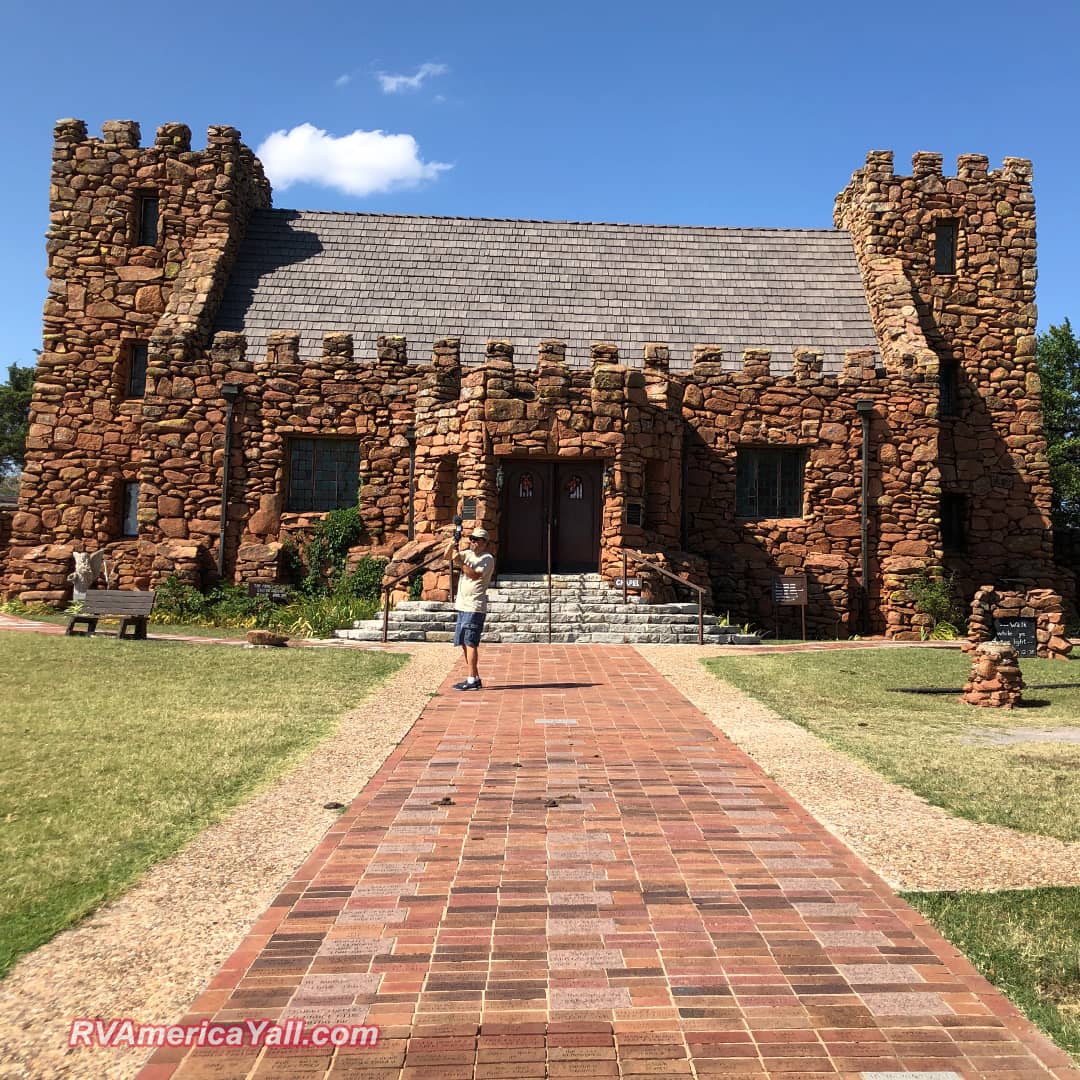
Even though this region is in some elevation, it gets hot here during the Summer. If you plan to hike, be sure to start early in the day and be prepared with plenty of water, appropriate clothing, a hat, sunglasses and sunscreen. Hike with a buddy and know your limits. During our visit, there wasn't much cell service in the refuge so it may be tough to get help if you need it.
The refuge offers 15 miles of hiking trails for a range of abilities. Check with the Visitor Center for information and trail maps.
Easy areas to visit that are very interesting to see with nearby parking: the Holy City of the Wichitas, the Visitor Center and the historic Quanah Parker Dam.
We enjoyed driving through all parts of the refuge looking at the scenery and watching for wildlife.
We were able to get a wi-fi signal and cell service in the parking lot of the Visitor Center.
The Visitors Center has a nice gift shop (with National Park stamps) and is a good resource for information about the refuge and surrounding area. There are also viewing windows so that you can watch the mixed-grass prairie from the comfort of air conditioning.
While we did not see roaming herds of bison or any elk during our visit (in July), we did see a variety of mammals and birds throughout the park. And our campsite in the Doris Campground (or Camp Doris as some folks call it) was visited each day by deer, turkeys and longhorns!
We had a great time visiting with the prairie dogs! Make sure you stop and take a look. They were very curious about us.
The Doris Campground features tent only, tent/RV, 30amp electric and non-electric campsites. It is an older campground with paved roads and paved back-in campsites. There are shared water spigots for filling your tanks, but usually they recommend boiling the water before using. We filled our fresh water tank before arriving. There is a dump station near the exit of the campground. During our visit, there was no cell service to the campground, and based on recent reviews, that appears to still be the case.
When we visited in July 2019, the campground was first-come, first served. Today, reservations are required. You can research the campsite options and make reservations on the Doris Campground page of Recreation.gov. It appears that entering the size of your RV may remove all campsite choices since the rig size specifications have not been entered for each site. If you have a mid-size to larger RV, you will need to look through the descriptions of each available site to find one which will accomodate your RV.
In 2019, we traveled in a Tiffin Breeze 31BR, which is a 31'6" motorhome with slides on both sides and sitting 11'7" tall. We fit into a campsite across from the bathhouse in Loop E (the loop with electricity). The non-electric loops appeared to be much tighter with vehicles hanging over into the road. Based on our experience, I don't think we would recommend the Doris Campground for anyone with an RV longer than 35'. There might be some sites larger RVs can fit into, but the trees and winding roads might make it a challenge to get in and out.
Since this is a federal campground, folks with the Senior National Parks Pass receive a 50% discount on camping fees.
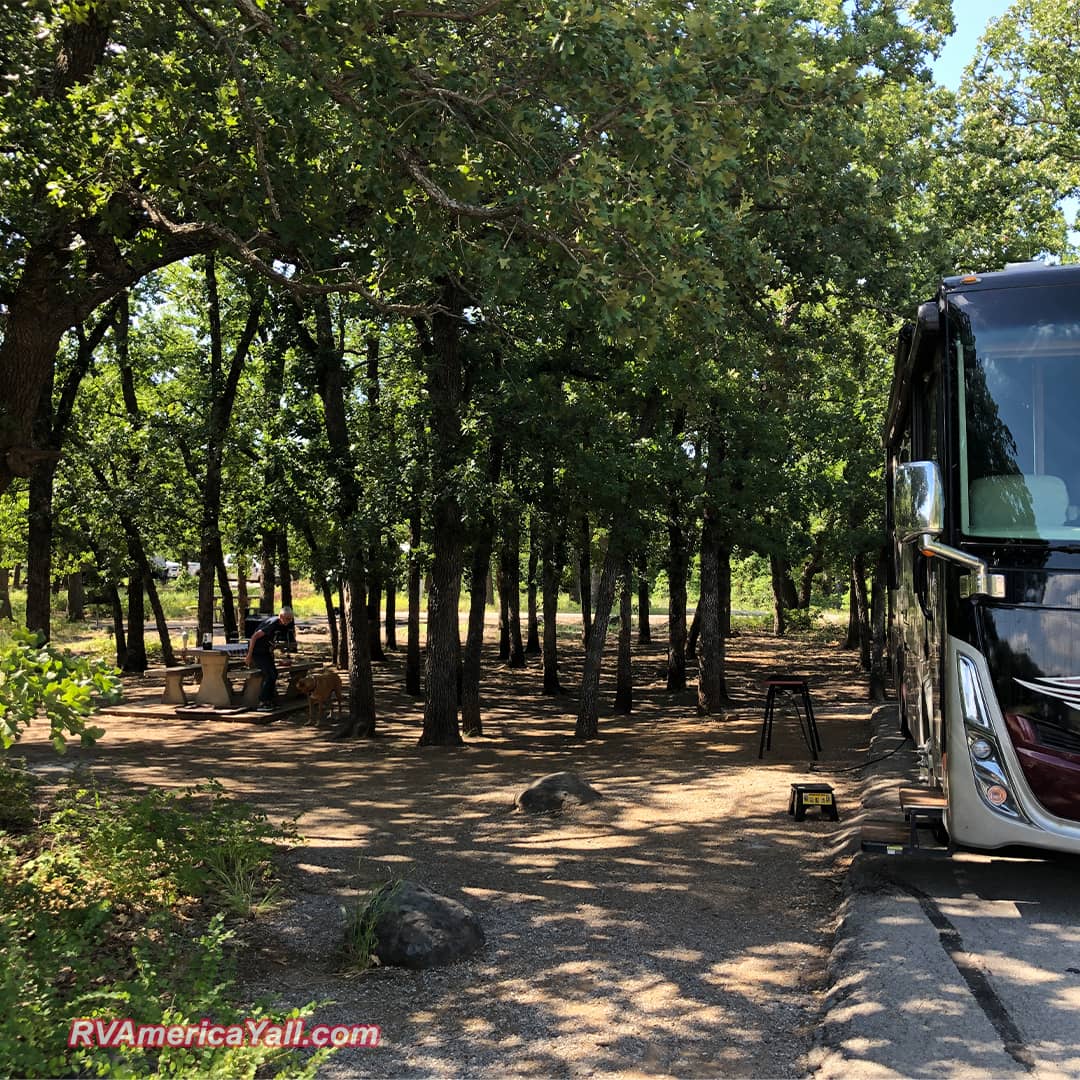
📍 Doris Campground inside the Refuge
Visit the Wichita Mountains National Wildlife Refuge Website
For a HUGE burger in a historic building, head over to nearby Meers Store for their famous MeersBurger! (It was the size of a plate and comes cut into 4 quarters!) This 1901 building and its restaurant are all that remain of what once was a boom town during the Oklahoma Gold Rush of the early 1900s.
Just outside of the refuge, past Mt Scott, you'll find Oklahoma's "First Resort Town", Medicine Park, established in 1908 by John William Elmer Thomas. The town features shops and restaurants in original cobblestone buildings along beautiful Medicine Creek, an offshoot of Lake Lawtonka. This little town of around 400 people has seen boom days and bust days. We had a great time walking the shaded creekside admiring the unique architecture.
The Fort Sill National Historic Landmark and Museum is FREE and open to the public just north of nearby Lawton OK. This is an active military base, so visitors are required to fill out paperwork and pass a background check before entering the grounds.
Nearby Lawton is home to the Museum of the Great Plains. Sharing the stories of the plains since 1961, this community museum gets great reviews from all ages. It's definitely on our list to see in the future.
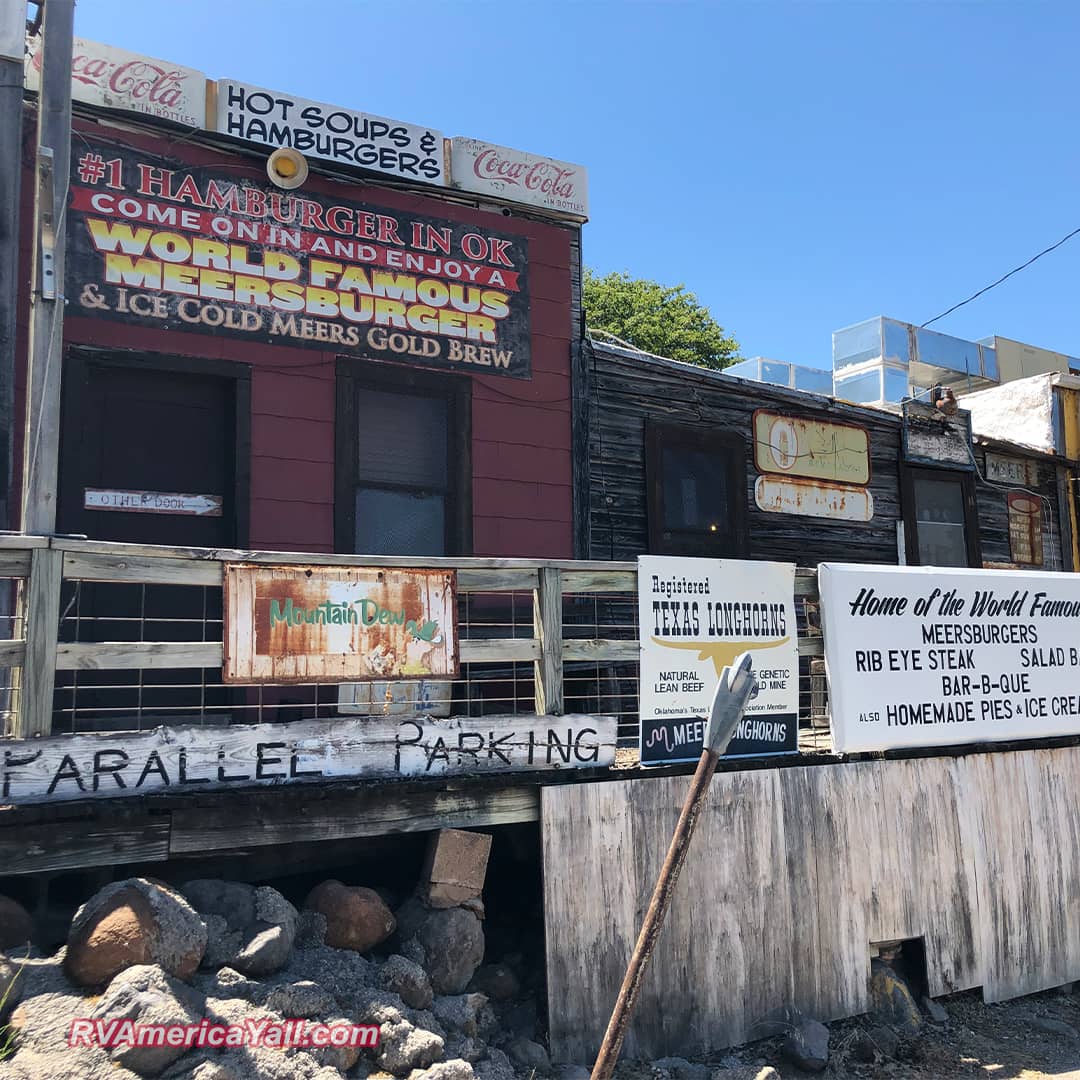
Big Game Wildlife Refuge in the US
60,000 acres
Wildlife Refuge in Oklahoma
Pronghorns, Bighorn Sheep, Prairie Chickens
Mount Pinchot at 2,461' above sea level
Lost Lake completed in 1926
Here's an excerpt...
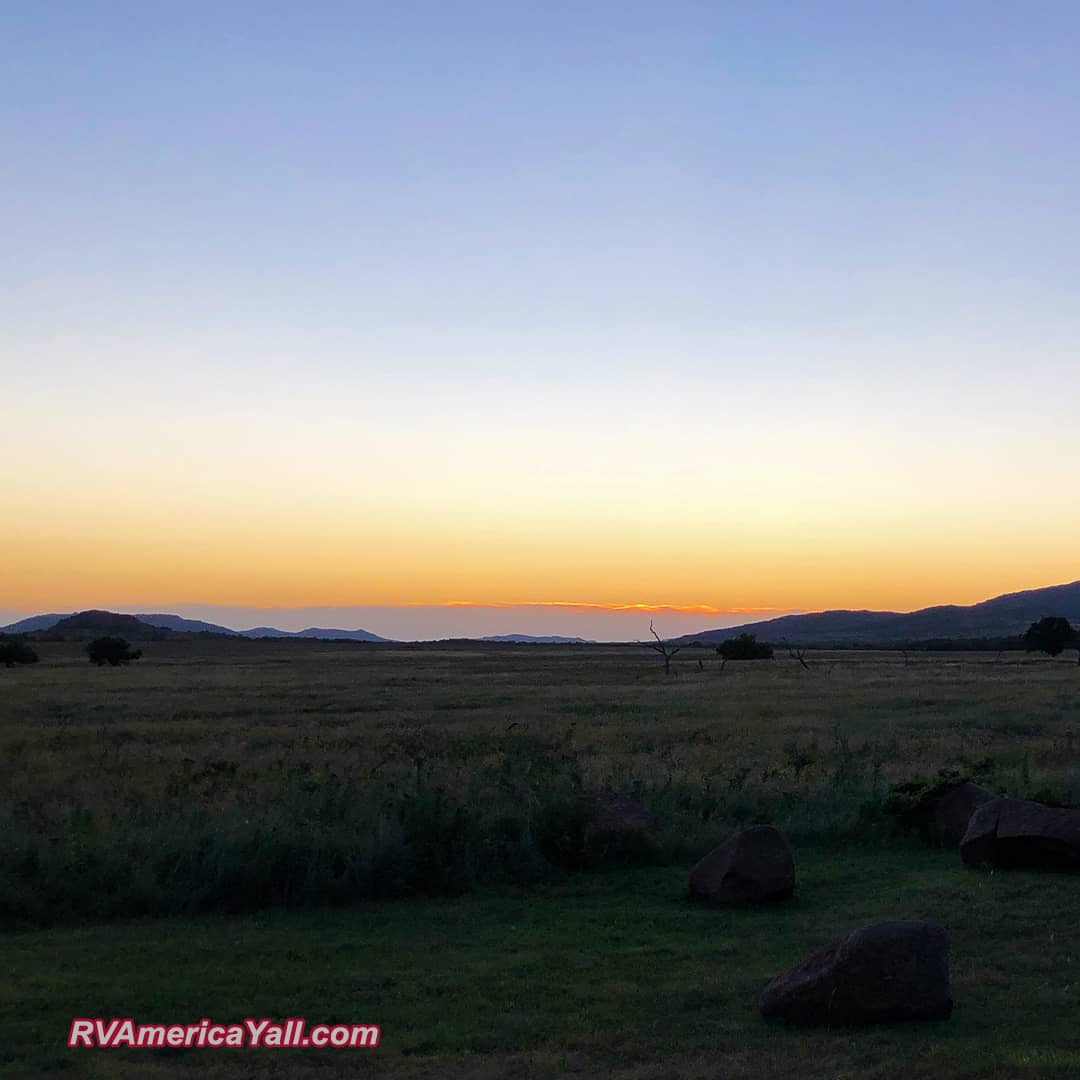
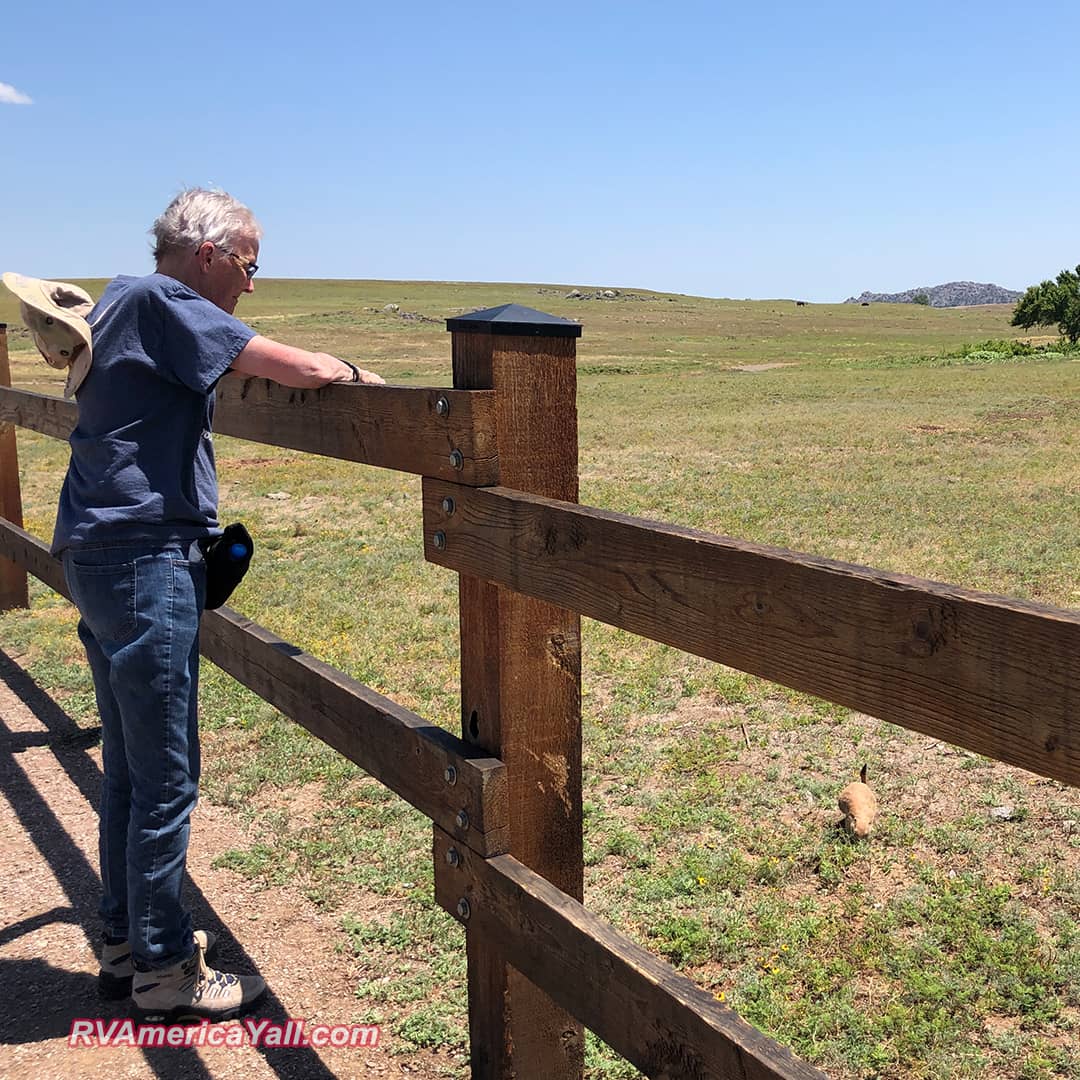
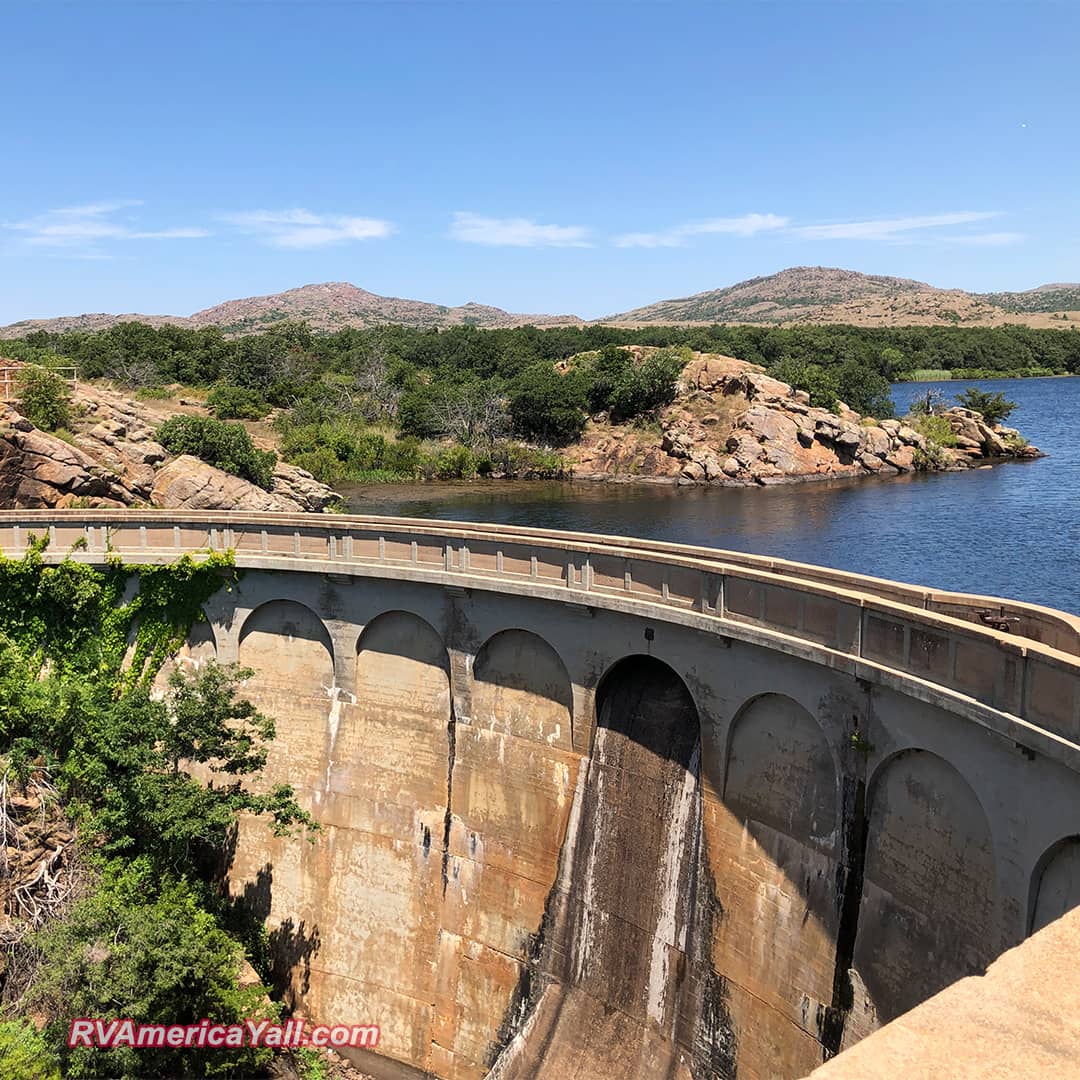
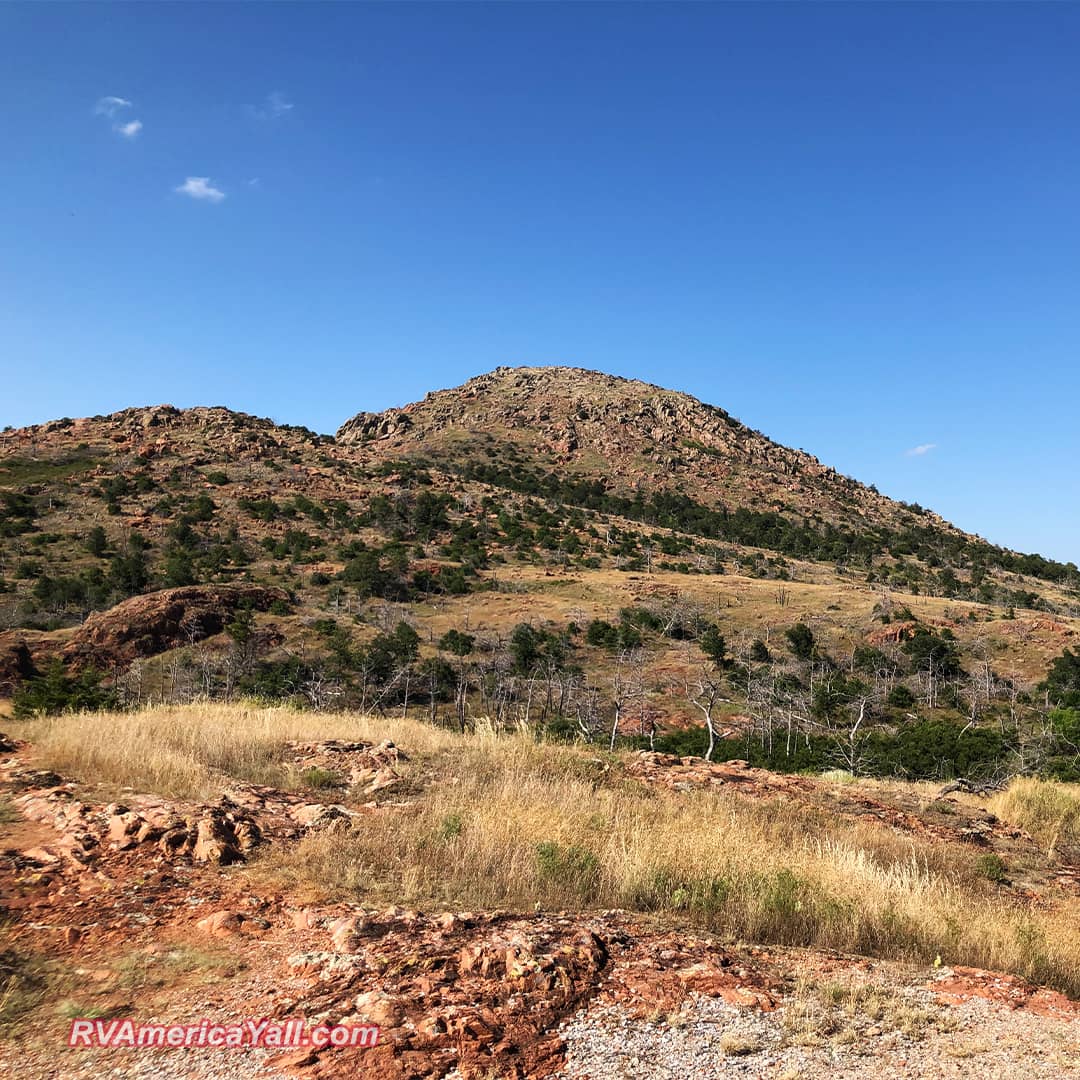
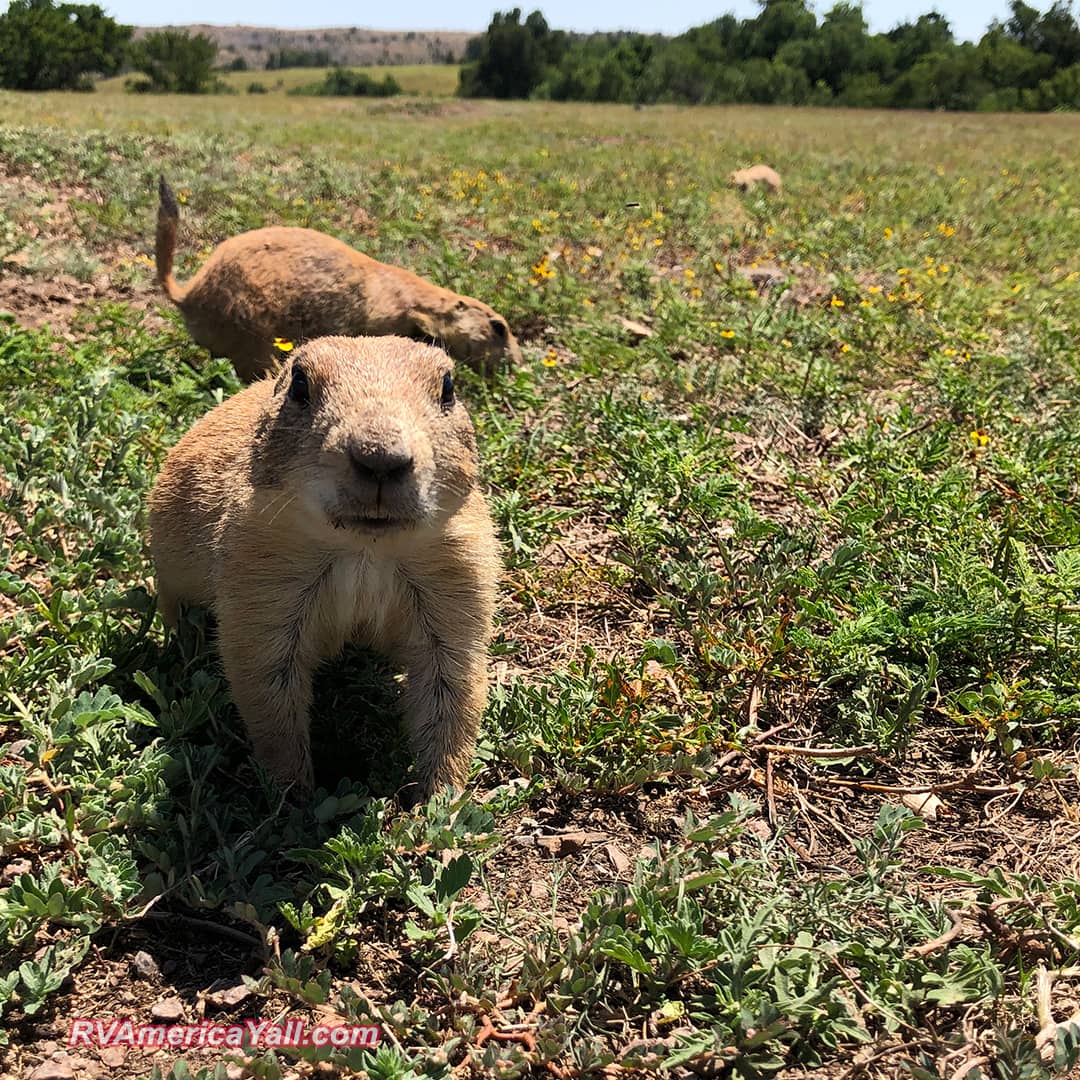
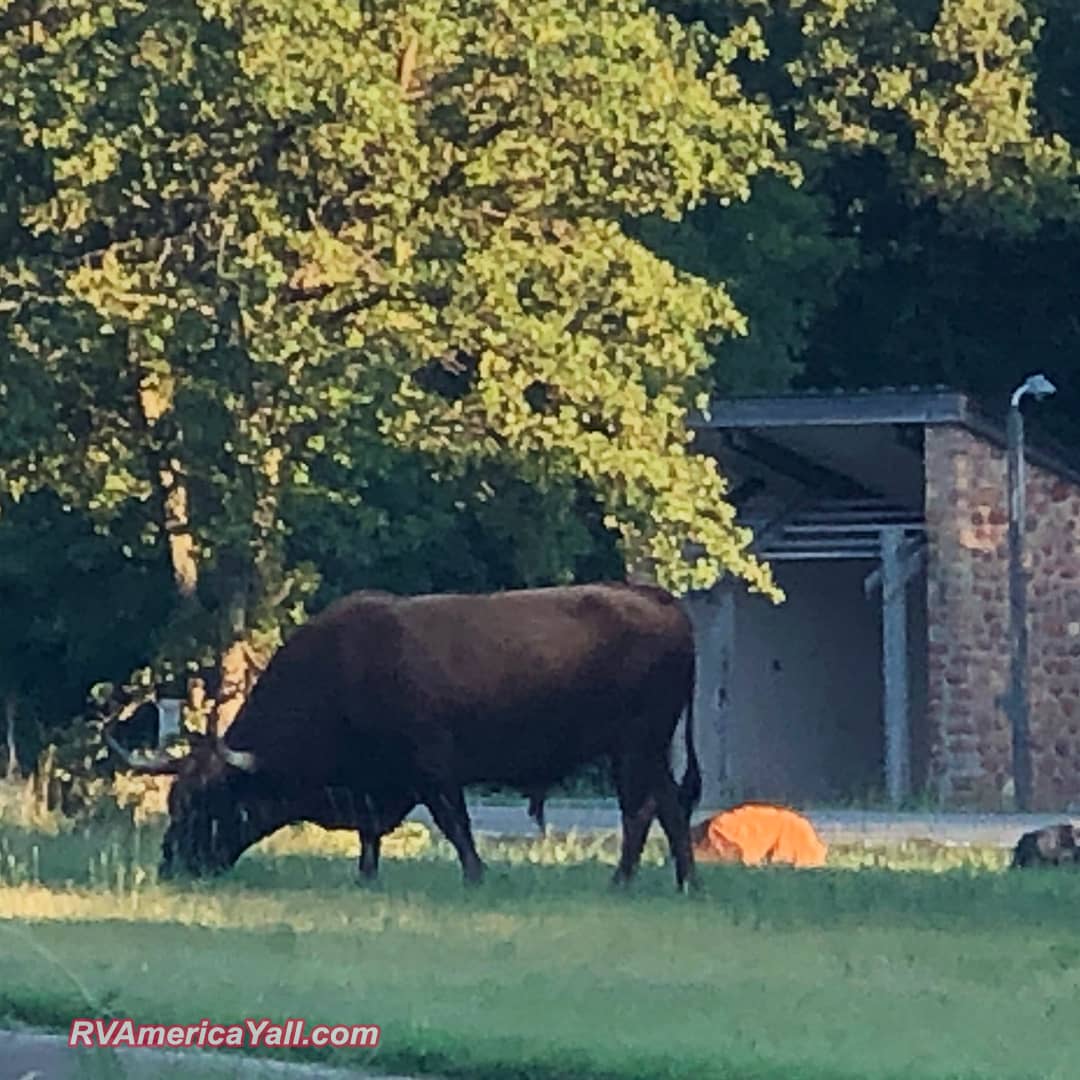
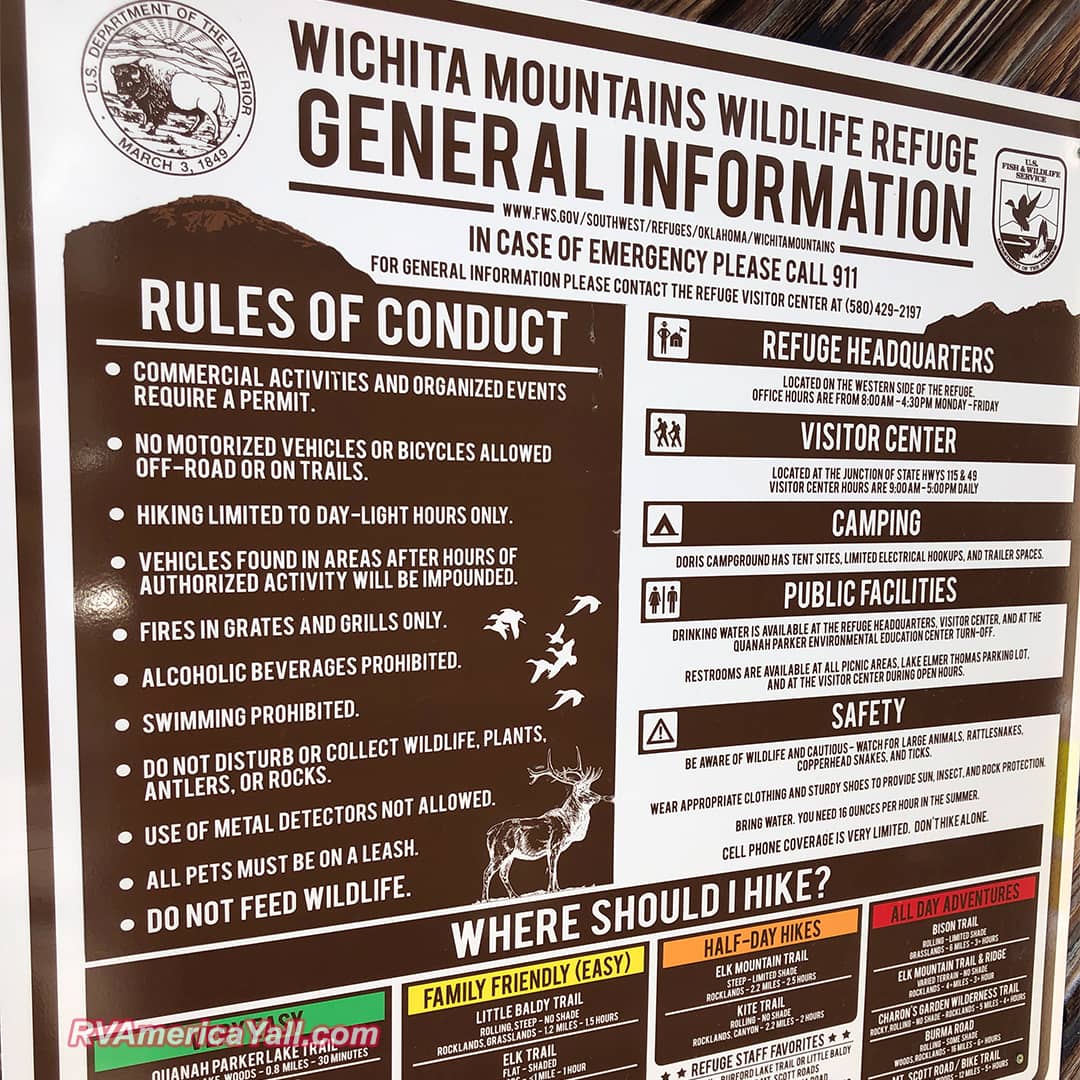
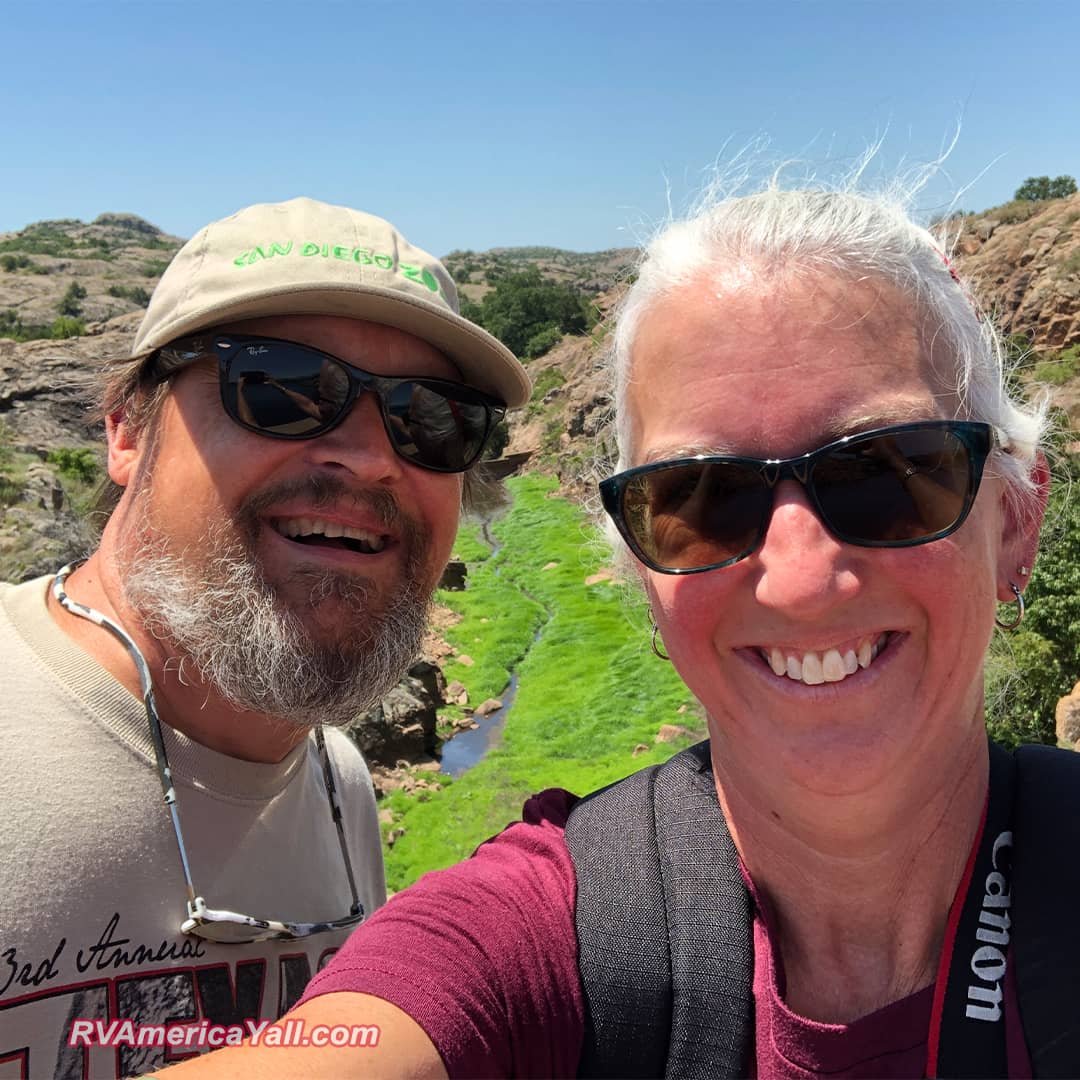
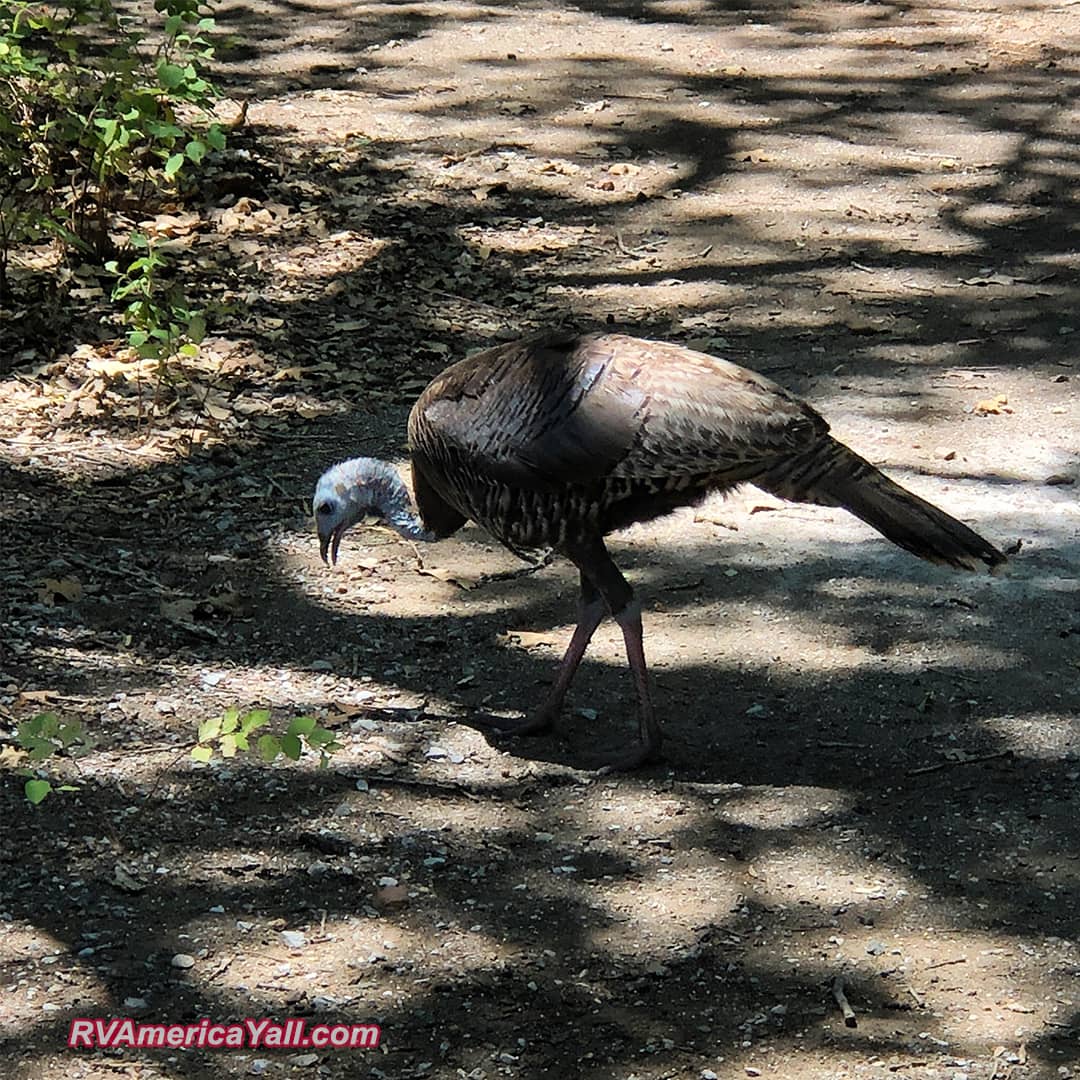
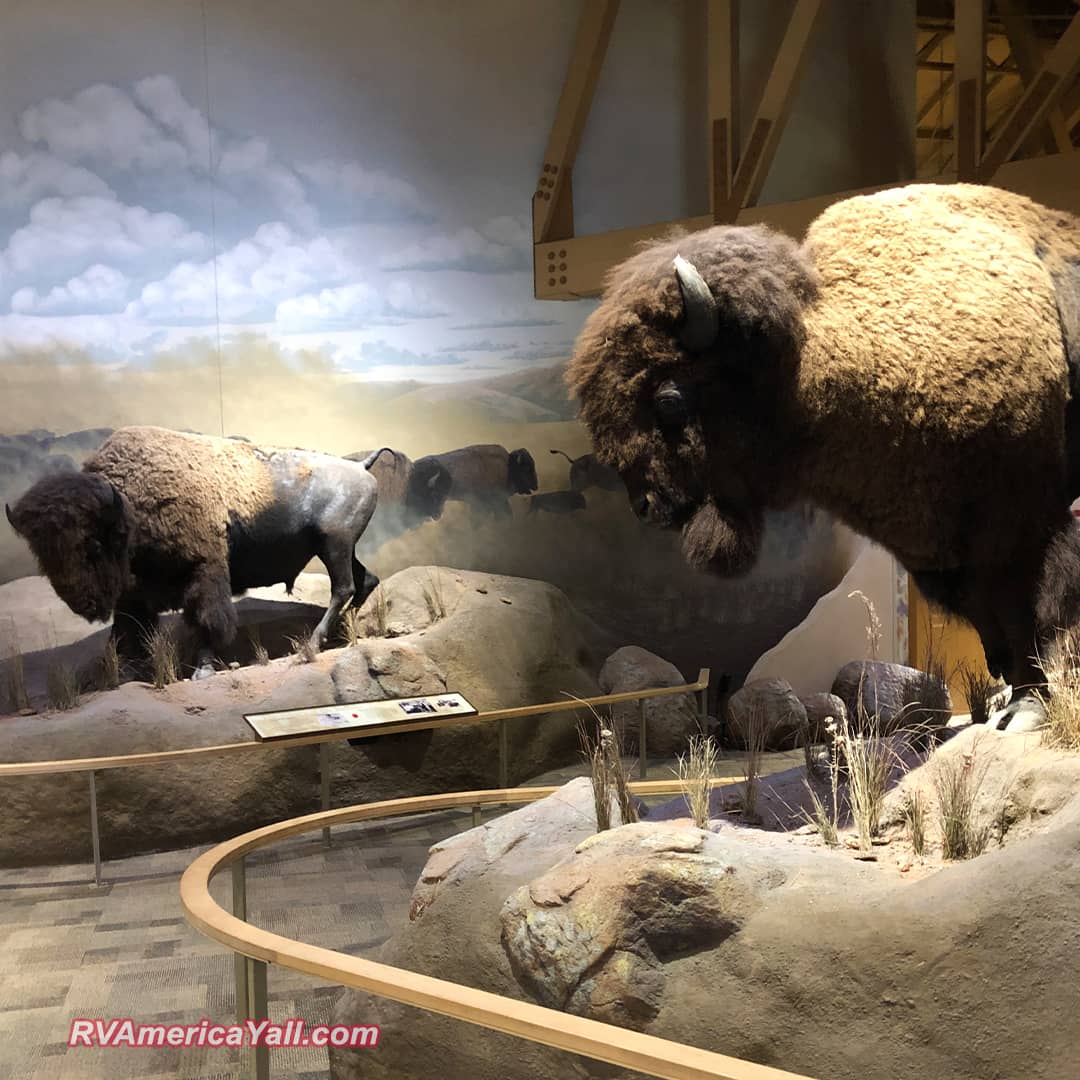

Hey y'all! We are Native Texans and (since 2018) Full-Time RVers sharing the adventures, challenges, and joys of RV life as we travel. We love camping and hiking in State and National Parks, discovering history, visiting interesting and quirky places, and exploring small towns. We're on a mission to experience life, not just live it with our dog, Star, and our cat, Astro. You can learn more about us on by visiting our About Us page. Thanks for joining us as we RV America Y'all!